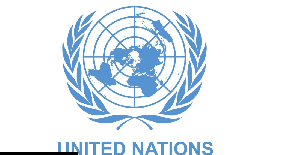General News of Tuesday, 24 March 2020
Source: www.ghanaweb.com
How over 100,000 Ghanaians died of influenza in 1918/1919
Between 1918 and 1919, the British government, then colonial masters of the Gold Coast (now Ghana) watched on with little concern as over 100,000 Ghanaians tragically lost their lives in an influenza epidemic.
The first case of the disease was recorded in August 1918 in the then commercial hub of Cape Coast.
An Accra-bound American vessel from Sierra Leone which had some of its crew members infected made a stop at Cape Coast and that’s where it began to spread.
From there the disease swept across the country like the biblical plague and by mid-December there were casualties all over with the North territory being the latest hit.
The spread of the disease was facilitated by the colonial transportation network.
In less than six months, official government figures pegged the death rate at 50,000 with the Northern part of the country being the hardest hit.
The Northern territories recorded over 28,700 deaths while Accra was assigned 655 deaths.
However, the numbers by the government were rubbished by historians and data analysts who pegged the number of deaths around 100,000.
Kuczynski, a data analyst said the number by the colonial masters was a misrepresentation of the number of deaths that actually occurred.
Coronavirus 101 years on
After more than a century of that devastating episode, Ghanaians have another virus staring them in the face.
From a virus which reportedly originated in China, the deadly disease has reached a pandemic status with over 15,000 deaths globally.
For Ghana, since recording its first two cases, the number has grown exponentially. In less than two weeks, 27 cases and two deaths have been recorded.
According to the World Health Organization, Ghana’s numbers in the first eight days far outweighs China Italy, Spain and UK who are three of the worst hit countries.
Experts are also warning that despite the measures taken by the government, they expect the numbers to increase significantly in the coming days.
Similarities
Both are respiratory-related disease which according to experts explain why the northern part of the country was badly hit as it was dry season.
Again, another symptom of coronavirus is pneumonia and same can also be said about influenza.
In controlling the influenza, affected persons were quarantined and social distancing was preached, similar to what is happening now.
Similarly, self-isolation and social distancing are the most used words now.
Large gatherings were discouraged, schools and other agencies were closed down just as it is happening now.
Government action
There was little action from the British government who according to historians acted negligibly and lackadaisically toward the virus.
The government had no ‘consistent or even remotely successful policy of dealing with the disease’.
The government is said to have made no attempts to ‘cordon off the Northern territories’ despite repeated calls from chiefs and prominent Ghanaians.
There were little or too few doctors to deal with the overwhelming number of cases that were recorded across every nook and cranny of the country.
Coronavirus
The government has adopted a number of radical measures to curtail the spread of the virus.
From an initial allocation of $100,000 million, the government has moved on to shut down all of the country’s borders to human traffic, closed down schools and ban all forms of social gatherings with membership of 25 or more.
The government has also procured over 50,000 test kits and also embarked on an elaborate awareness campaign to sensitize Ghanaians on the preventive measures the must adhere to.
Despite these efforts by the government, some Ghanaians, particularly, the opposition NDC have not been impressed.
The leader of the party told the Nana Addo Dankwa Akufo-Addo on Sunday that he owes Ghanaians a ‘proper plan and not prayers.’












